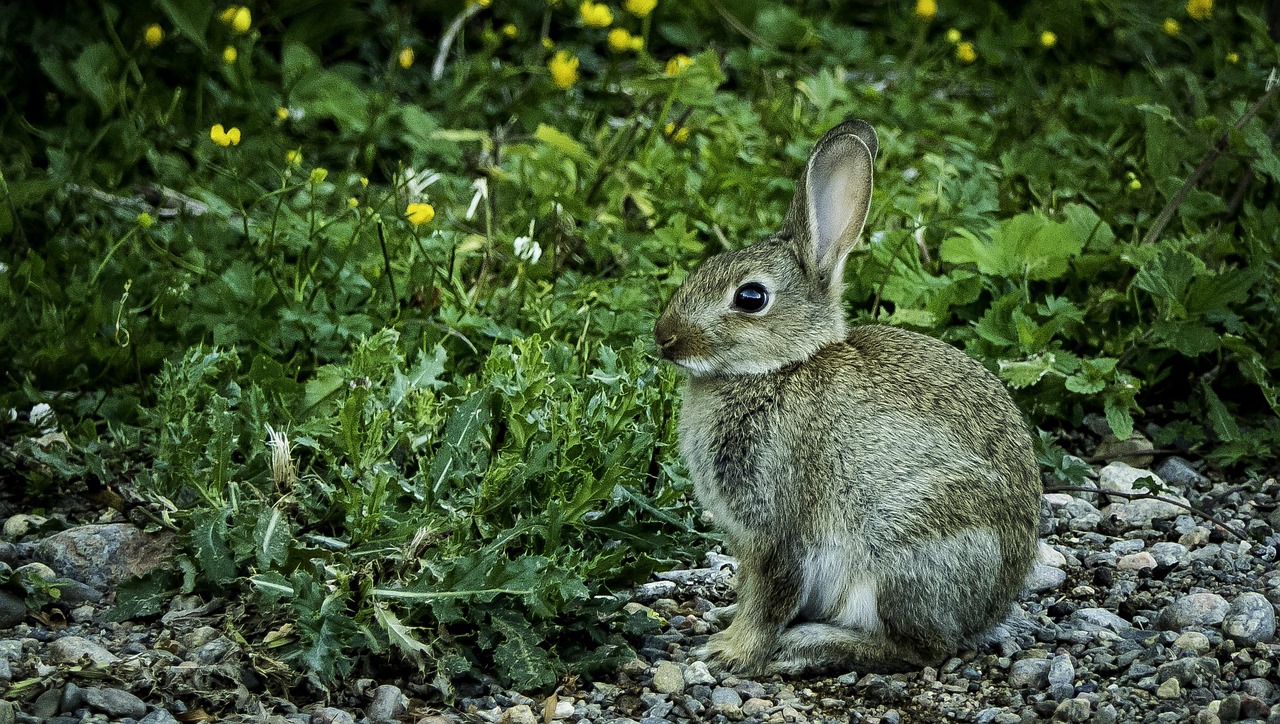European Rabbit

Characteristics:
The European rabbit is much smaller than both the mountain hare and the brown hare. Body length 35–45 cm, weight 1–2.5 kg. It has a compact body, shorter legs and ears than hares, and a short tail with a white underside. The fur is grey-brown to brown, with a lighter belly. The rabbit moves with short hops and stays close to cover.
Habitat:
Found mainly in southern Sweden (especially on Gotland, Öland, and in Skåne), where winters are mild and the soil easy to dig. It prefers dry, sandy terrain, grasslands, dunes, and open scrubland, often near cultivated fields.
Behaviour:
The rabbit is social and lives in colonies. It digs extensive burrow systems, known as warrens, with several tunnels and chambers. Rabbits are most active at dawn and dusk and spend the day underground. When alarmed, they run quickly in a zigzag pattern toward their burrows.
Diet:
Herbivorous. Feeds on grasses, herbs, leaves, bark, and crops. Rabbits often re-ingest their soft droppings (a behaviour known as coprophagy) to extract additional nutrients.
Reproduction:
Breeding occurs nearly all year but mainly from February to August. The female produces 3–6 litters per year, each with 3–7 kits. Gestation lasts about 30 days. The kits are born blind and hairless in a lined nesting chamber inside the burrow.
Tracks and signs:
- Tracks: Smaller than hare tracks, with short steps (5–10 cm). Rounded prints from small hind feet.
- Droppings: Small, round pellets (about 0.5–1 cm), often found in large piles near burrows or feeding areas.
- Burrows: Entrances in sandy ground with multiple openings leading to a complex underground system.
Distribution:
Originally from the Iberian Peninsula, the European rabbit has spread throughout much of Europe. It was introduced to Sweden during the Middle Ages and is now mainly found in the southern regions. Populations fluctuate greatly depending on winter conditions, diseases (such as myxomatosis and rabbit hemorrhagic disease), and habitat quality.
Hunting:
Hunted primarily by stalking, ambush hunting, or using small hunting dogs. In some areas, ferrets are used to flush rabbits from burrows. Hunting usually takes place during autumn and winter.
Firearm class (Sweden):
Rabbit hunting is done with class 4 rifles or shotguns (common pellet sizes: no. 5–7).
Think for the hunting exam:
- Smaller than hares, with shorter ears and legs.
- Lives in colonies with underground burrows (warrens).
- Active mainly at dawn and dusk.
- Has many litters per year.
- Hunted with class 4 rifle or shotgun.
- Recognised by numerous small droppings and burrow entrances.
